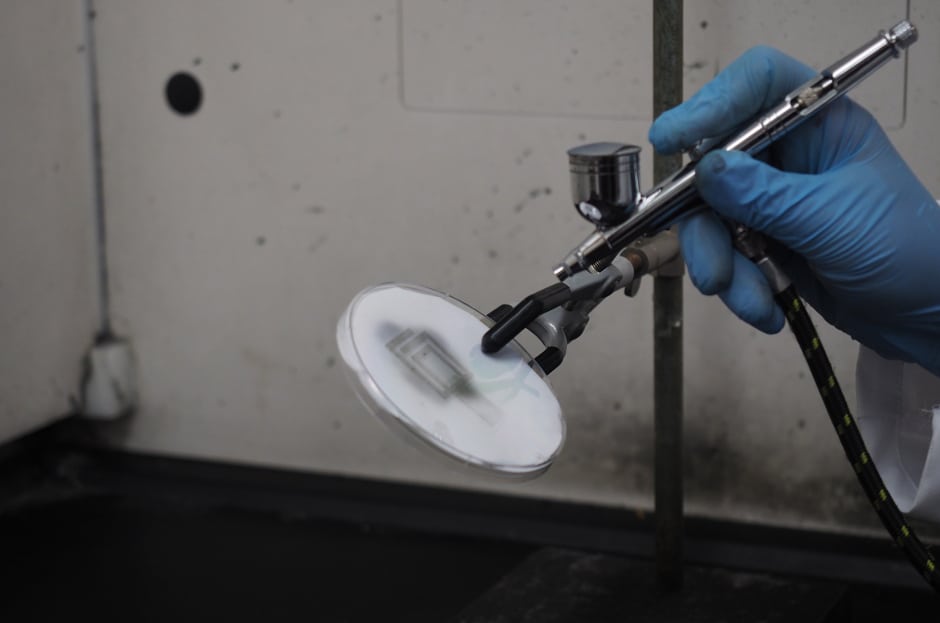Spray on MXene antennas turn surfaces into transmitters

A method for spraying invisibly thin MXene antennas onto flexible substrates could lead to next-generation wireless devices including wearables, functional fabrics, and IoT devices.

In research published in Science Advances, a group from Drexel University’s College of Engineering in Philadelphia reported a method for spraying the antennas that are made from MXene, a type of two-dimensional, metallic material that is said to perform as well as those being used in mobile devices, wireless routers and portable transducers.
"The ability to spray an antenna on a flexible substrate or make it optically transparent means that we could have a lot of new places to set up networks - there are new applications and new ways of collecting data that we can't even imagine at the moment," said Kapil Dandekar, PhD, a professor of Electrical and Computer Engineering in the College of Engineering, who directs the Drexel Wireless Systems Lab, and was a co-author of the research.
Register now to continue reading
Thanks for visiting The Engineer. You’ve now reached your monthly limit of news stories. Register for free to unlock unlimited access to all of our news coverage, as well as premium content including opinion, in-depth features and special reports.
Benefits of registering
-
In-depth insights and coverage of key emerging trends
-
Unrestricted access to special reports throughout the year
-
Daily technology news delivered straight to your inbox










UK Enters ‘Golden Age of Nuclear’
The delay (nearly 8 years) in getting approval for the Rolls-Royce SMR is most worrying. Signifies a torpid and expensive system that is quite onerous...